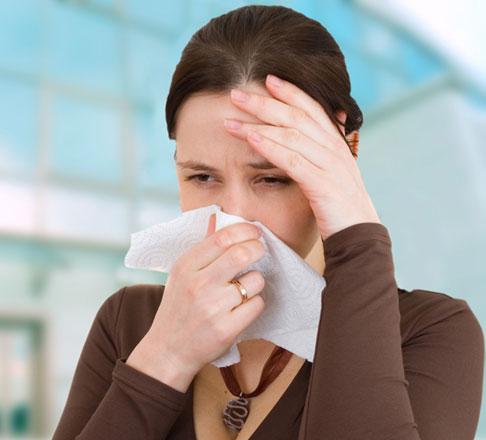You are here
Damp, mouldy homes tied to adult respiratory problems
By Reuters - Aug 15,2017 - Last updated at Aug 15,2017

Photo courtesy of findhomeremedy.com
People living in homes with water damage, damp floors or visible mould are more likely to have chronic sinus problems and bronchitis, as well as allergies, asthma and other breathing disorders, according to a large study from Sweden.
Researchers found that about 11 per cent of homes had visible signs of dampness — and the more signs were present, the higher the likelihood of residents having nose, throat and lung-related health problems, according to the report in Clinical and Experimental Allergy.
“A lot of papers show an association between asthma-related symptoms and building dampness. What’s new is the association between chronic inflammation and building dampness,” said senior study author Christer Janson of Uppsala University.
“This is an important finding as chronic inflammation is quite a common condition with a very negative side effect on quality of life,” he told Reuters Health by e-mail. “We were surprised that the association with building dampness was so strong.”
The researchers analysed data from more than 26,000 adults in four Swedish cities who responded to a questionnaire about respiratory symptoms, smoking, education and environmental exposures. In particular, the study team was interested in chronic rhinosinusitis, which includes symptoms of runny nose, itchy nose, facial pain, reduced sense of smell, nasal congestion and sneezing.
They identified dampness by asking about visible water damage, floor dampness or visible mold seen in the home during the last 12 months and gave participants a dampness exposure score based on how many of these signs were present.
A total of 2,992 people, or 11.3 per cent, reported any signs of dampness. For 8.3 per cent of the study participants, one sign was present, for 2.3 per cent there were two signs and for 0.7 per cent all three signs were seen in the home.
Reported dampness was more common in humid or mild climates, as compared to areas of the country with longer, colder winters. People reporting damp homes were more likely to be women, unemployed or full-time students, smokers and less likely to be retired.
Compared to nonsmokers with no signs of dampness at home, nonsmokers with any dampness signs were 90 per cent more likely to have nighttime shortness of breath, 77 per cent more likely to have chronic rhinosinusitis and 67 per cent more likely to have chronic bronchitis. They also had higher rates of wheeze, nighttime coughing, asthma and allergies.
For chronic rhinosinusitis, the authors note, the degree of increased risk from dampness for nonsmokers was about the same as the effect of smoking for people without dampness in the home.
“I found it both interesting and alarming that the adverse effects were stronger among people with low socioeconomic status due to limited possibilities for moving to a better home or making needed renovations,” said Jouni Jaakkola of the University of Oulu in Finland, who wasn’t involved in the study.
Future studies should look at long-term results to better understand cause and effect with dampness at home, Jaakkola told Reuters Health by e-mail.
“Cross-sectional studies [like this one] may underestimate the effects if people who get symptoms in damp homes change to better homes,” he said. “This probably explains the interaction between socioeconomic status and damp problems.”
Janson and Jaakkola recommended several online resources to help people prevent dampness and mold problems. The US Environmental Protection Agency (EPA), for example, has a mold-control primer on
EPA.gov (bit.ly/29fxO4Y) and so does the US Centres for Disease Control and Prevention on the CDC.gov website (bit.ly/2lxArWu). The World Health Organisation (WHO) offers brochures in PDF format on its European website here: (bit.ly/10VfGJq) and here: (bit.ly/2nGrpH4).
These resources recommend locating moisture problems, removing molds and controlling excessive water and condensation at home. Leaky pipes and roofs are often the biggest issues, the WHO notes. Professional help may be needed for leaks in building structure, sewage and air ducts, otherwise mould-removal can be done at home with a protective mask, goggles and rubber gloves, according to the EPA.
A mild detergent can remove the mould, followed by a full-room wet wiping or vacuuming after the spores are sealed in a plastic trash bag.
“If there are signs of building dampness in your home or you have water damage, get professional help and try to fix it as soon as possible,” Janson said.
Related Articles
People who suffer from a common chronic sinus disorder may be more likely than those who don’t to develop depression and anxiety, a Korean s
People with asthma may face increased risk from second-hand smoke exposure while riding in the close quarters of a vehicle, according to US researchers.
NEW YORK — As we move into colder months you may find yourself sneezing and sniffling a little bit more, but how do you know if you have all

















